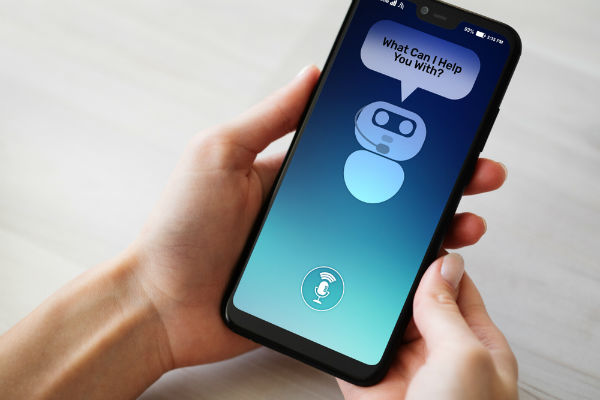The art of conversation
Over the decades, scientists have been able to develop robots to perform all sorts of jobs for us, but never quite the ability to hold a conversation. Until now that is with different types of chatbot.
In recent years technology has developed with the growth of conversational AI, and chatbots are now able to understand and interact with people naturally, using spoken or written language. For businesses this is a huge step forward and one that is substantially reducing operating costs while increasing customer service satisfaction rates for those organisations using them. So, what do you need to know?
How are chatbots helping businesses?
For organisations that have a lot of routine queries coming in, chatbots provide a much cheaper alternative to the traditional customer service department. Chatbots will work 24 hours a day, seven days a week. They don’t go off sick, nor come to you with an annual leave form to sign off.
It is estimated that using chatbots can save a customer service department around 30%.
And we, the customers, like chatbots too. For straight forward queries they are quick and easy to communicate with, and we are not restricted by limited opening hours. When we have a query, we just want to get the answer or resolution quickly. Chatbots do this for us.
Researchers suggest that within the next five years, 75 to 90 per cent of queries will be dealt with by Chatbots.
And from a business point of view, chatbots can also be programmed to identify trends and cross-sell. So they can help to boost sales as well as increase customer satisfaction.
Sounds promising, but where do you start?
The most basic type of chatbot is a button-based chatbot. It offers choices along the lines of press X for help with this, Y with help with that, or Z for help with the other. It is very simple to set up and is perfect for very simple tasks, but it is limited in the type of scenarios it can help with.
The next step along the chatbot road is a hybrid chatbot. This has the ability to understand typed questions and has natural language understanding (NLU) so it can help with a wider range of queries than the standard button-based bot.
After the hybrid, comes the AI chatbot. It uses NLU and is able to perform more complex tasks and can work across a variety of business areas simultaneously. For companies servicing hundreds of queries daily, or that experiences peaks in queries at certain times of the day, the AI chatbot can help to increase the speed with which these queries are dealt with.
Next is the omnichannel chatbot. As customers we are used to using a variety of communication tools. Twitter, text, Facebook, email, Insta, the telephone…. This provides a difficulty for businesses to service and respond to all communication channels. The omnichannel chatbot resolves this difficulty by coordinating these multiple channels and ensuring that when customers switch from one communication channel to another, the history is not lost. There is nothing more frustrating to a customer than having to repeat again and again the background to a query. An omnichannel chatbot helps provide a seamless journey for customers, reducing their frustration and saving a business time and resource.
And finally, we have voice chatbots. The newest chatbot on the block and the one, we anticipate, that will change the way we use chatbots forever. As smart speaker ownership grows – already on target to exceed 200 million by the end of this year – the way we interact with companies is evolving.
It is estimated that by 2020, 50% of all internet searches will be voice based, and 30% of all searches will be done using a device without a screen. Basically, we’d rather just ask Alexa. Or Siri. Or Cortana…it’s easier than typing.
And as the technology develops, we are getting our voice assistants to do a growing range of tasks for us. Yes, they can turn on the lights and heating for us, but what about renewing your car insurance, or reminding you to collect your prescription. Voice assistants are an ever-growing part of our daily lives and we will come increasingly come to expect to be able to use voice chatbots when communicating with companies.
Key take away
The different types of chatbot can range from the most basic button-based options to the most sophisticated voice-activated technology, what is right for your company will depend on your business type, the level of incoming communication you receive and the sort of queries your organisation typically deals with.
Of course, as the sophistication of the technology increases so does the investment you need to make. But whatever chatbot option chosen, a business can expect to make substantial cuts to operating costs while at the same time increasing customer satisfaction levels.
Read more about conversational AI in our recent blog post.

